Guide to the New York City Subway
The New York subway is literally a city beneath the city. Here are some basic tips to help you find your way around and get the most out of the Big Apple's fastest form of transportation.
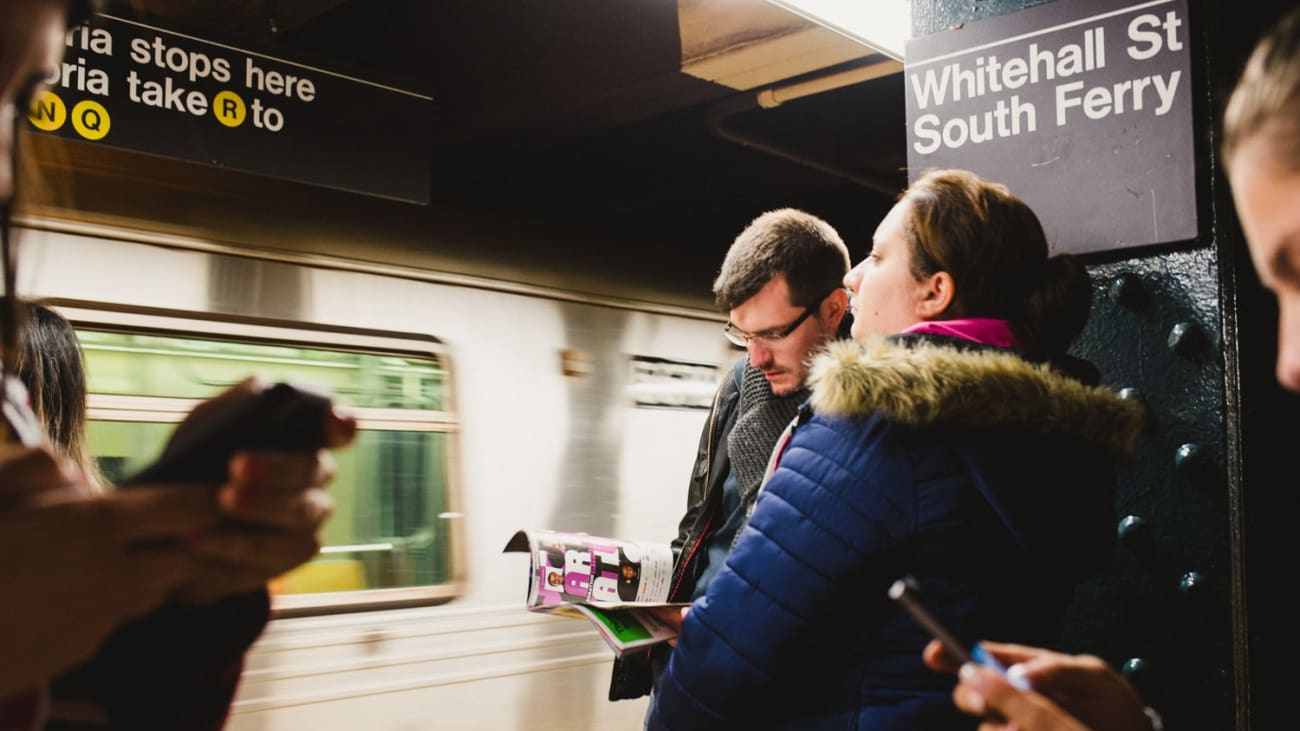
Image of the New York City Subway | ©Hellotickets
If you're planning a trip to the Big Apple, transportation is probably something you're concerned about if it's your first time using it, because with so many different lines, stations, and types of subways, it's easy to get confused. Don't worry! In this guide to the New York subway, I'll tell you everything you need to know to get around like a local.
How much does a ticket cost and how do I buy one? Are there any passes available?
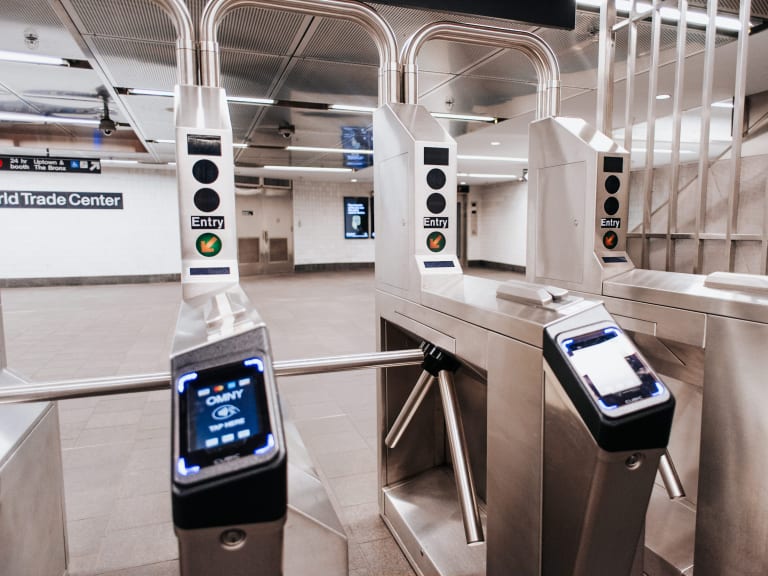
** A single ticket on the New York subway costs $2.90 (around €2.70)**. If you plan to use public transportation frequently for your trips, the most convenient option today is to pay with OMNY (bank card, cell phone, or watch) or, if you prefer, with a MetroCard, a rechargeable card valid for the subway and bus that is being gradually replaced by OMNY and will no longer be sold at the end of 2025. The unique feature of the MetroCard is that it can be recharged for:
- Individual trips (Pay per Ride).
- Unlimited trips for 7 days ($34).
- Unlimited travel for one month ($132).
Alternatively, you can also pay with OMNY, the contactless system that allows you to use your bank card, phone, or smartwatch. With OMNY, there is a weekly limit: if you reach $34 in trips within a period of 7 consecutive days (counted from your first payment), the rest of your trips within those 7 days are free.
How to get a MetroCard
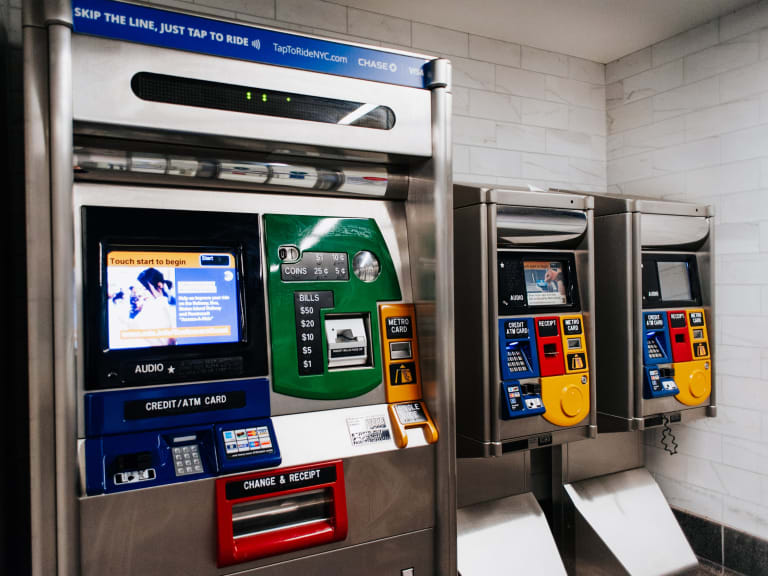
- To get your MetroCard, go to any subway station, where you will find ticket vending machines.
- Once you have selected your language on the machine, simply choose the type of card you want from the available options.
- If this is your first time purchasing a MetroCard, you must select the "Get a new card" option, which has a $1 charge (approximately €0.90).
- If you already have a MetroCard from a previous trip, simply select the "Recharge your card" option and enter the amount you wish to add.
How to purchase it from the machine step by step
- After selecting the "Get a new card" option, you must choose the type of MetroCard: Regular MetroCard or Unlimited Ride.
- Within the Unlimited Ride option, there are two possibilities: "Unlimited rides for 7 days for $34 (about €31)" and "Unlimited rides for one month for $132 (about €120)."
- Most travelers choose the "Unlimited rides for 7 days for $34" option. In such a large city, you'll get a lot of use out of it because there are long distances to cover, and with this MetroCard, you can hop on and off the bus or subway in New York as many times as you need.
- The next step is the payment method. You can use cash, a debit card (ATM), or a credit card.
- When you insert your card, the vending machine will ask you for a zip code. As a tourist, you won't know the zip codes for the city, so you can enter 00000 or 99999.
- And that's it! The ticket machine will issue your MetroCard and you can start using it.
Key questions about the MetroCard

- What happens if I have both a balance and unlimited rides on my card? If you have both a balance and 7 days of unlimited rides on your Metrocard, you will first use up the rides for that week and then start using the dollar balance. In other words, unlimited rides take priority over the balance for individual rides.
- Do children pay on the subway? Children under 44" (111 cm) can travel for free as long as they are accompanied by an adult who is paying for their trip. As for babies, they also travel for free until they reach the age of two.
- How do you validate your Metrocard? It may seem obvious, but you need to swipe the card through the turnstile slot at a moderate speed so that the machine's reader can read the Metrocard properly. In other words, not too fast and not too slow.
- What happens if you take the wrong entrance and have to go back outside to find the correct station entrance? If you have chosen the unlimited travel Metrocard, you will have to wait 20 minutes to validate the card again at the turnstile. And if you have loaded the Metrocard with a balance in dollars, another $2.90 (€2.70) will be deducted from your balance. Unfortunately, you cannot request a refund for the wrong trip.
- Can I buy the Metrocard before traveling to New York? Yes, you can currently buy it online or from subway machines, although the MTA has announced that it will stop selling and distributing MetroCards as of December 31, 2025, and is replacing them with OMNY.
- If I have questions when purchasing it, will someone help me? You will find subway employees at many stations, but if there are none, don't worry, because New Yorkers are very helpful and will give you a hand if you need it.
- If I'm traveling to New York for two weeks, should I buy two cards? No, that's not necessary. Once you've used up your 7-day unlimited travel pass, you can recharge the same card with credit or another unlimited pass for another week.
- Can I share my MetroCard with someone else? If you choose the 7-day unlimited travel pass, the card is for personal use only and is non-transferable. However, if you choose to load it with credit and pay for each trip, then you can share your MetroCard.
- What happens if I lose my Metrocard? Unfortunately, you will have to buy a new card and you will lose all the balance and/or value you had on it. Only the "Unlimited Travel for One Month" MetroCard is protected against theft and loss if you purchase it with a debit or credit card at the subway vending machines.
- How do I know how much balance I have left on my card? If you have been reloading your card with credit and don't know how much you have left, you can check it at the card readers in many subway stations, which will tell you your balance, how many days you have left, and when the card expires.
- If I have money left on my card, will I get a refund? No, so my advice is to be careful when you top up your card. In any case, the Metrocard is valid for two years, so if you have money left on it, I recommend that you keep the card to use on your next trip to the city or give it to someone else who is traveling to New York.
- Can the Metrocard be used for other forms of transportation? In addition to the New York subway system, this card can be used on the bus system and the Roosevelt Island Tramway. If you want to take a ferry, you will have to pay for a separate ticket, as it is not included in the Metrocard. If you would like to know more about the ferry, don't miss my practical guide to the New York ferry.
How to find your way around: express trains, line directions, and the meaning of the letters
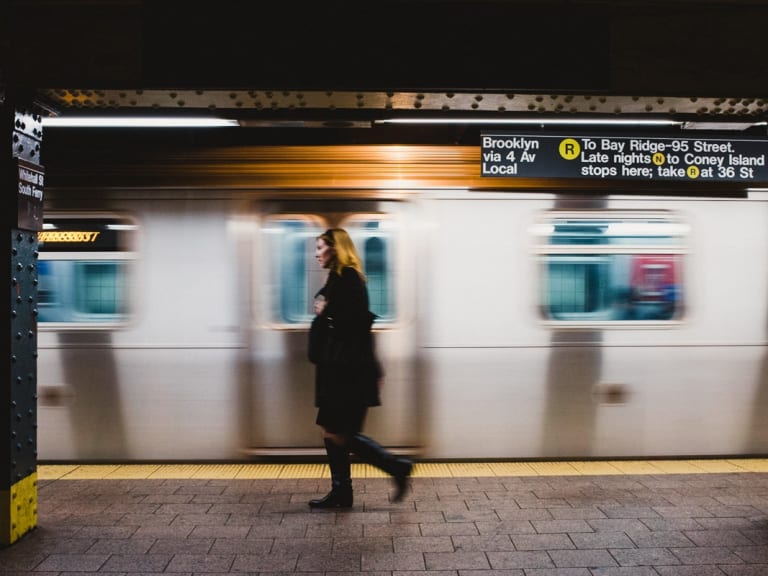
Once you have your ticket in hand, you'll need some guidance so you don't get lost in the largest subway system in the United States and one of the largest in the world. It has 26 lines, 472 stations, and more than 4,000 kilometers of tracks connecting Manhattan, the Bronx, Brooklyn, and Queens. The only district not served by the New York subway is Staten Island, although you can get there by car from Brooklyn or from southern Manhattan on the Staten Island ferry.
New York subway lines are identified by colors, and each line can be further divided into letters (A, B, C, etc.) and numbers (1, 2, 3, etc.) depending on the direction. To avoid getting lost, it's a good idea to follow these tips:
Be clear about where you are going
When taking the subway, be sure of the direction you want to go, as most lines split and trains take different directions. Once you know which line to take, go to the nearest subway stop. All stations are marked with signs indicating the entrance to the platforms going south (Downtown and Brooklyn) or north (Uptown and Queens).
When boarding the subway, pay attention to the signs and announcements. Both the signs and the public address system indicate the direction the train is going, showing the last stop on the route or which New York borough it is heading to.
Local trains vs. express trains: how to tell them apart
An important detail to note is that there are two types of trains in New York : local and express. Unlike local trains, express trains do not stop at every station and are much faster, making them very convenient for traveling long distances. It's fantastic because you can cross the city in less than 15 minutes!
Now, how do we know where an express or local subway stops? Very easy, if you see a white circle on the map, it's an express train, if it has a black circle, then it's a local train.
Pay attention to the letters and numbers
Each line of the New York subway has a different color to identify it, but because they branch off at certain points on the map, to avoid the map becoming a multicolored rainbow, each branch is given a different name with numbers and letters.
Therefore, when taking the subway, you should refer not only to the color of the line but also to the letters and numbers. In fact, New Yorkers know the lines better by their numbers and letters than by their colors.
And where can I see the subway letter or number to know which one to get on? It appears on the first subway car, but it is also displayed outside each car so you can check it. Keep this in mind if you need to ask for directions or a route while underground.
Pay attention to the direction of the subway stations
As I said before, if you look at the New York subway map, you can see that there are subway lines that go in different directions when they branch off two or more times (such as the orange or yellow lines).
The first thing you need to know before using it is to correctly distinguish between Uptown and Downtown. Sometimes, in the same subway station, the different entrances have different directions, i.e., on many streets, if you enter from one sidewalk, you go south, and from the other, you go north.
Therefore, before going down to the subway, I advise you to check the direction so that you don't have to go back out onto the street and change direction, because in many cases, once you are inside the station, you cannot change platforms. The directions that the New York subway can take are: Downtown and Uptown (South and North) or Westbound and Eastbound (West and East). Sometimes you will also see signs indicating the district or neighborhood to which they are traveling:
- Manhattan
- Queens
- Brooklyn
- Bronx
- Etc.
Transfer between lines?
Looking at the New York subway map, you might think that you can't transfer between lines unless they are marked as intersecting. But this isn't always the case, as the map shows black lines indicating the existence of transfer tunnels that make it easier to change lines and avoid unnecessary journeys.
Get your New York subway map
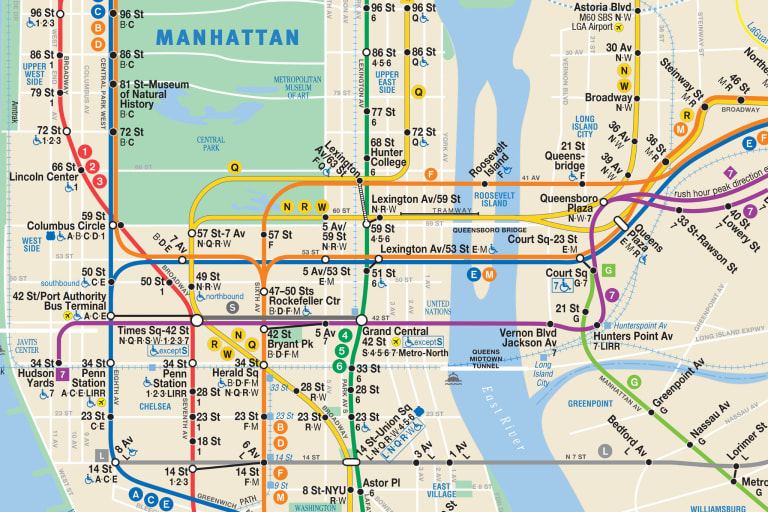
I suggest you download the New York subway map in PDF format to your phone. That way, you can always have it with you and consult it whenever you need to, even when you don't have an Internet connection.
However, if you have data on your phone, I recommend downloading an app in Spanish with the official New York subway map, as you'll not only find the map, but you'll also be able to calculate the best route to take, the time the next subway will arrive, and see any incidents on the lines, among other things. Here is an option for iOS and Android; if you prefer the official MTA tool, you can also use The Official MTA App.
What are the New York subway hours and frequency?
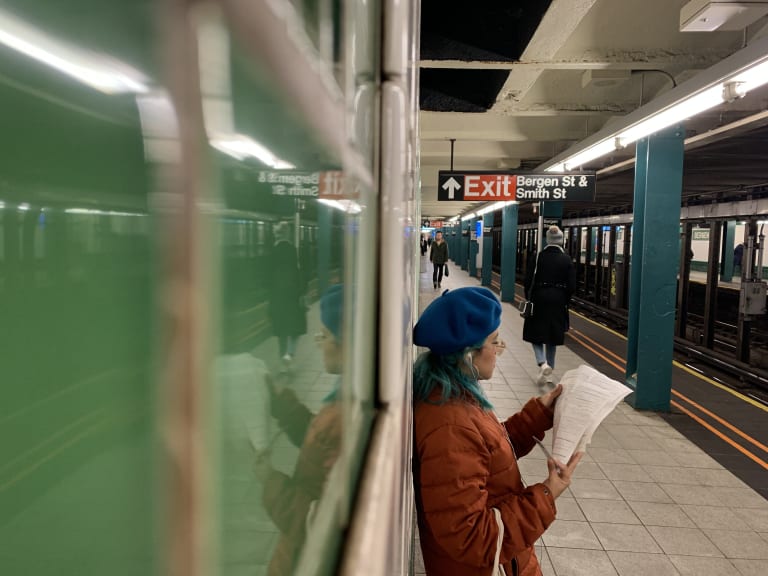
The New York subway runs 24 hours a day, every day of the year, although some station entrances may be closed at night.
Train frequency varies depending on the line and time of day:
- Rush hours: between 2 and 10 minutes, depending on the line.
- Off-peak hours and evenings (midday and early evenings): between 8 and 16 minutes.
- Night (early morning): approximately every 20 minutes.
Since actual frequency varies by line and operating conditions, it is recommended to check the official MTA app for real-time schedules and changes.
Tips for using the New York subway
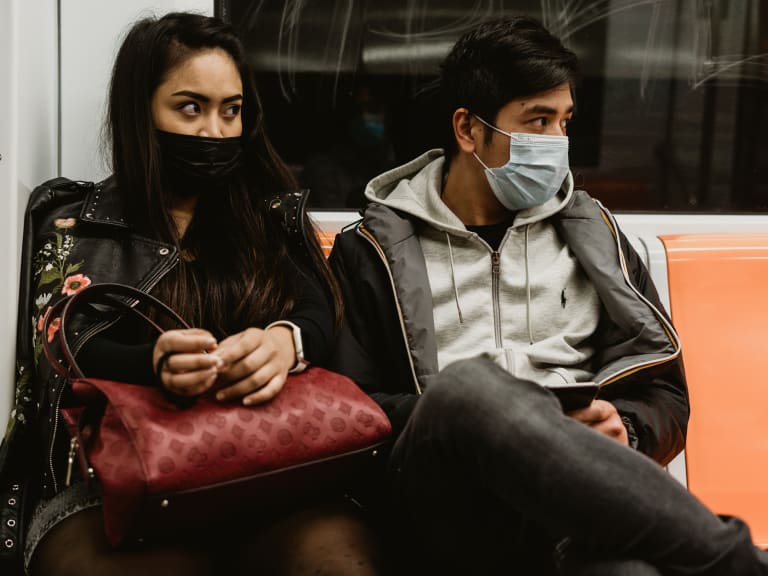
The New York subway is not so different from other subways around the world in terms of rules of use. However, as a traveler, it is always a good idea to keep in mind some basic rules to make getting around on the transport network easier.
- In the carriages, always let people get off before you get on.
- Do not block the traindoors with your luggage to allow people to get on and off.
- When using escalators, if you are walking up or down, always use the left side. Otherwise, stand on the right side to facilitate the passage of other users.
- Give up your seat to people who may need it (the elderly, pregnant women, people with reduced mobility, etc.).
- Do not occupy other seats with your belongings. Seats are for the use of other passengers.
- Avoid eating or drinking inside the carriage during journeys out of respect for other passengers.
- In the subway or on the platforms, do not stare at people.
Explore New York's ghost subway station

The streets of New York are fascinating; there's always something new to discover in the city that never sleeps. There are countless tourist attractions above ground, but not many people know that beneath it lies a secret place known as the City Hall ghost subway station, which for a long time was shrouded in darkness.
Just its enigmatic name alone makes you want to find out what it's all about, right? All you have to do is hop on the New York subway and take line 6 to the end of the line, as the train still runs through this station. After Brooklyn Bridge, you will pass through the ghost station of City Hall and see it from inside the train car.
Unfortunately, you can't get off at the station to see it, but at least the subway runs at such a low speed that with a little skill you can take several photos of this little piece of New York history, which tells us about the origins of this public transport system at the beginning of the 20th century.
What is the ghost station of the New York subway like?
City Hall was never a very popular station among New Yorkers, as most of them got on and off at the nearby Brooklyn Bridge. Over time and for various reasons, it was finally closed to the public in 1945. Perhaps this has allowed it to remain in such good condition, as have the original stained glass windows, chandeliers, and glass panes that decorate it. In fact, many find it similar in style to the decor of Grand Central Terminal.
Another way to take a look at the ghost station of City Hall is from above ground. In the middle of City Hall Park there is a space reserved for pets. If you look closely, you will see an iron opening from which you can peer inside the structure. Amazing, right?
The elegance and style of the design were striking. City Hall had windows that let in natural light and vaulted ceilings covered with tiles, clearly influenced by Spanish architect Rafael Guastavino, whom the New York Times dubbed "the architect of New York" after his death for his famous "Guastavino tile" and his great contributions to American architectural design.
More things to do in New York!

But the ghost station of the New York subway is not the only secret place in the city. There are many original things to do and unique corners to explore! In the article 10 secret places and original plans you can't miss in New York, I tell you about some of them.
And if all that sightseeing makes you hungry, then I recommend you take a look at the article The 10 best places to eat in New York to find out where to treat yourself, or book a food tour in New York. You come here to enjoy yourself and have fun!
